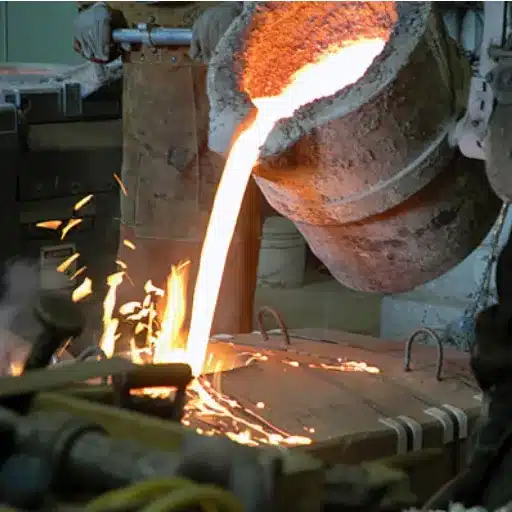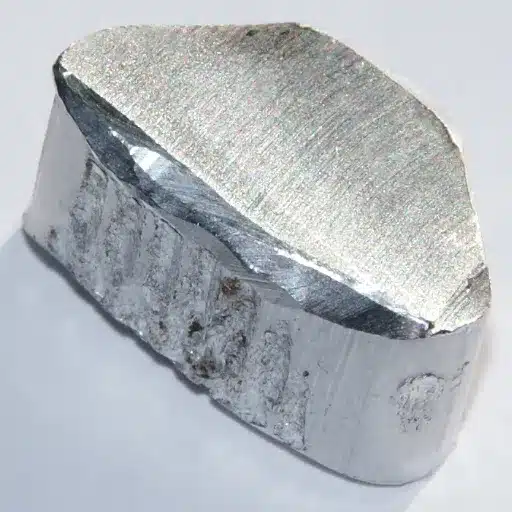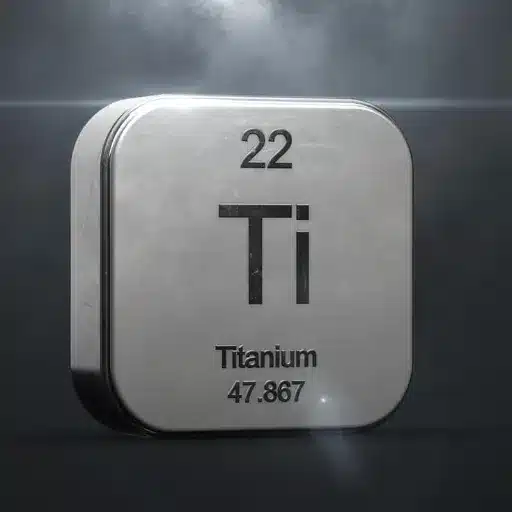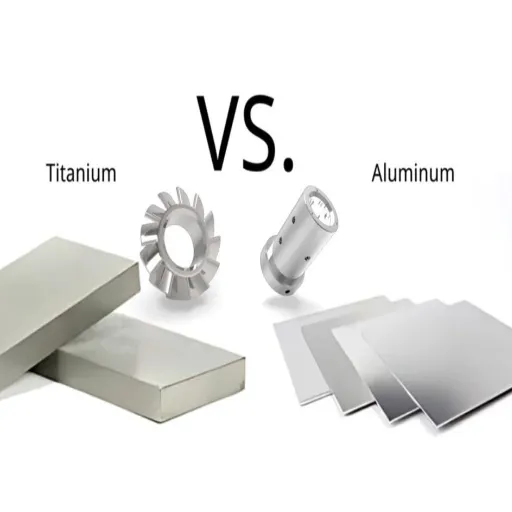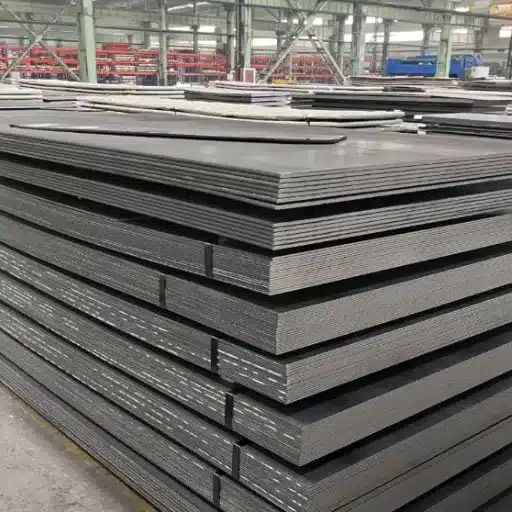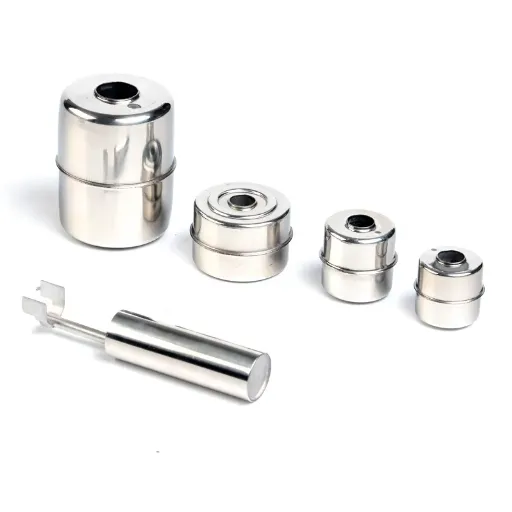In the case of high-performance duplex stainless steels, Zeron 100 and 2507 are the two most talked-about materials, and for a good reason. They are famous for their very high strength, excellent corrosion resistance, and outstanding durability; thus, they are very much needed in harsh applications that oil and gas, chemical processing, and marine areas consider.
This article is going to cover the details of Zeron 100 and 2507 by dissecting their chemical compositions, mechanical properties, and even the areas of application that are the most suitable for each. This comparison will be an eye-opener for an engineer, a material scientist, or an industry professional to get the right duplex stainless steel for their project needs without being confused.
Introduction to Duplex Stainless Steels

Duplex stainless steels, which have a composition of approximately equal parts austenite and ferrite, have become staple materials in any strenuous industrial application. This peculiar structure takes advantage of both characteristics, thus giving the superlative strength, excellent corrosion resistance, and great durability of regular stainless steels.
Key Benefits of Duplex Stainless Steels:
- Incredible resistance to stress corrosion cracking
- Approximately twice the yield strength of conventional austenitic stainless steels
- Superior performance in chloride-exposed environments
- Material savings through thinner sections while maintaining structural integrity
- Enhanced temperature resistance up to 300°C
What are Duplex Stainless Steels?
Duplex stainless steels are a subgroup of stainless steels, which are defined by having a mixed microstructure composed of about 50% austenite and 50% ferrite. The presence of two phases provides the material with an exceptional combination of mechanical strength and resistance to corrosion, which in most cases exceeded that of all the conventional stainless steels.
These steels typically contain additives including:
- Chromium: Essential for passive film formation and corrosion resistance
- Nickel: Improves ductility and prevents stress corrosion cracking
- Molybdenum: Enhances resistance to pitting and crevice corrosion
- Nitrogen: Increases both pitting resistance and mechanical strength
Key Characteristics of Duplex Alloys
| Property | Characteristic | Benefit |
|---|---|---|
| Microstructure | 50% austenite + 50% ferrite | Balanced mechanical and corrosion properties |
| Yield Strength | ~2x conventional austenitic steels | Enables thinner, lighter components |
| Corrosion Resistance | Superior to SCC, pitting, crevice | Extended service life in harsh environments |
| Temperature Range | Up to 300°C | Suitable for heat exchangers and pressure vessels |
| Weldability | Good with proper techniques | Versatile fabrication options |
| Cost Efficiency | Lower nickel/molybdenum content | More economical than high-alloy alternatives |
Importance of Alloy Selection
Alloys selection is a matter of great concern to deal with highly corrosive environments, especially in energy generation, desalination, and infrastructure development, among others. The right choice of alloy is not only responsible for the longevity of the material but also for the reduction of long-term maintenance costs and operational downtime, which are critical for industries dealing with aggressive substances like seawater and industrial chemicals.
Overview of Zeron 100 and 2507
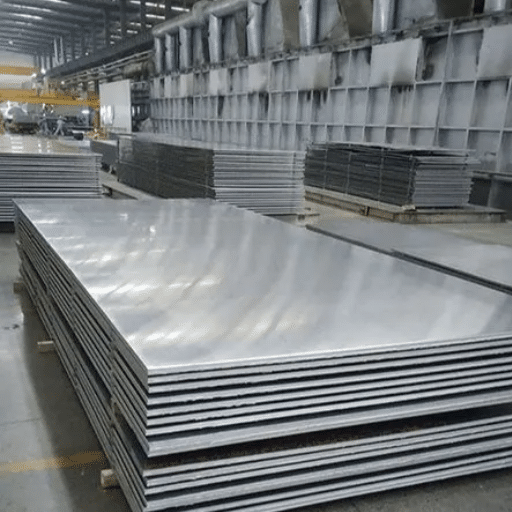
The duplex stainless steels Zeron 100 and 2507 stand out as top-notch materials because of their extraordinary resistance to corrosion, high mechanical strength, and ability to withstand harsh environments. Both materials play key roles in making difficult engineering projects sustainable and profitable.
Introduction to Zeron® 100
Zeron® 100 is a super duplex stainless steel that has undergone extensive engineering to offer excellent corrosion resistance, incredible strength, and high durability in places where other materials have succumbed. The material presents the characteristics of both high mechanical strength and exceptional resistance to pitting, crevice, and stress corrosion cracking.
Key Applications:
- Offshore oil platforms
- Desalination plants
- Severe chemical processing
- Seawater handling systems
- High-pressure operations
Understanding 2507 Stainless Steel
2507 Stainless Steel, or Super Duplex Stainless Steel, is a material that has been specifically developed to provide outstanding performance in harsh conditions. It is marked by a special microstructure that contains almost equal amounts of ferrite and austenite.
Chemical Composition:
- 25% Chromium
- 7% Nickel
- 4% Molybdenum
- Nitrogen enhancement for additional strength
Notable Features:
- Yield strength approximately double that of 316L stainless steel
- Good thermal conductivity
- Low thermal expansion
- Superior resistance to chloride ions
Comparison of Chemical Composition
The chemical composition study reveals that differences in elemental content have a decisive influence on the mechanical and corrosion-resistant properties of these materials. The exact mix of elements determines the alloy’s applicability in different environments.
| Element | Typical Range | Impact on Performance |
|---|---|---|
| Chromium (Cr) | 16-27% | Oxidation resistance, corrosive environment protection |
| Molybdenum (Mo) | 2-6% | Enhanced pitting and crevice corrosion resistance |
| Nickel (Ni) | 8%+ | Improved ductility, stress corrosion cracking prevention |
| Nitrogen (N) | Variable | Increased pitting resistance and mechanical strength |
| Copper (Cu) | Trace amounts | Enhanced corrosion resistance in aggressive chemicals |
| Tungsten (W) | Trace amounts | Additional corrosion protection in harsh environments |
Corrosion Resistance of Zeron 100 and 2507
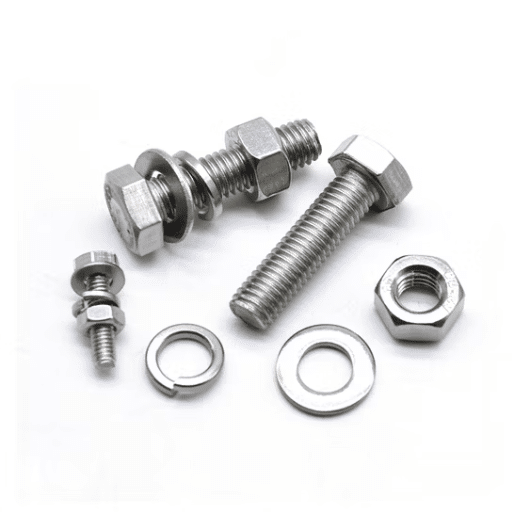
Zeron 100 and 2507 are super duplex stainless steels, and their most significant property is the splendid corrosion resistance that they possess, especially in extremely aggressive environments.
Zeron 100 Corrosion Performance
- Chromium Content: 25-27% providing superior passive film protection
- PREN Value: Over 40, indicating very high resistance to localized corrosion
- Resistant to: Pitting, crevice corrosion, and stress corrosion cracking
- Ideal Environments: Seawater, desalination plants, chemical processing
2507 Corrosion Performance
- Composition: 25% chromium, 7% nickel, 4% molybdenum, plus nitrogen
- PREN Value: Competitive with Zeron 100, often considered interchangeable
- Resistant to: Uniform corrosion in acidic and chloride-rich environments
- Ideal Environments: Offshore platforms, heat exchangers, brine exposure
Critical Performance Indicators
Critical Pitting Temperature (CPT) and PREN (Pitting Resistance Equivalent Number) are among the key parameters indicating their superiority. Both Zeron 100 and 2507 demonstrate exceptional performance, with PREN values over 40 attesting to their very high resistance to localized corrosion even in extreme conditions.
Exceptional Corrosion Resistance in Harsh Environments
Zeron 100 and 2507 duplex stainless steels are specially made for highly corrosive environments, where they prevail even over the best standard grades of stainless steel and many high nickel alloys. The latest data indicate that these materials can still keep their properties in environments with:
- Chloride ion concentrations over 25,000 ppm
- Temperatures up to 600°F (315°C)
- Continuous exposure to aggressive media
- High-pressure operational conditions
Performance in Chloride Environments
Both alloys perform exceptionally well in environments rich in chlorides owing mainly to their remarkable resistance to both pitting and crevice corrosion. The presence of chromium promotes the formation of a protective oxide layer that is difficult to destroy, while other elements like molybdenum and nitrogen contribute even more to the prevention of localized corrosion.
Recent studies indicate that these materials maintain structural integrity under:
- Continuous exposure to chloride concentrations of 10,000 ppm and higher
- Elevated temperatures in marine environments
- Aggressive chemical processing conditions
- Desalination plant operations
Tensile Strength and Mechanical Properties
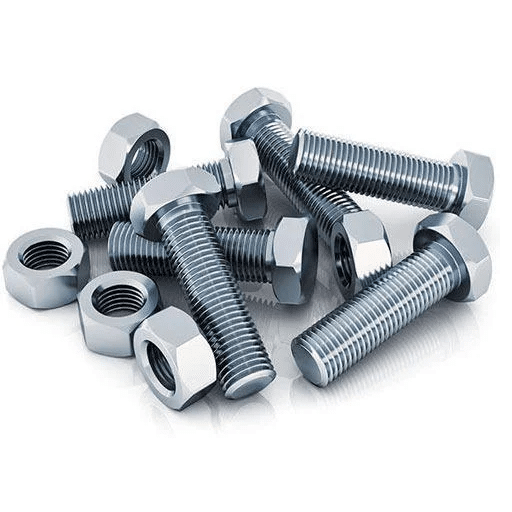
Tensile Strength of Zeron 100 vs 2507
The tensile strengths of Zeron 100 and 2507 super duplex stainless steels are essential characteristics for selecting them for demanding industrial applications.
| Property | Zeron 100 | 2507 |
|---|---|---|
| Minimum Tensile Strength | ~750 MPa | ~795 MPa |
| Tensile Strength Range | 800-860 MPa | 795-930 MPa |
| Yield Strength | 550-620 MPa | 550-620 MPa |
| PREN Value | >40 | Competitive (similar range) |
| Fracture Toughness | Very High | Very High |
| Special Advantage | Exceptional in chloride environments | High thermal conductivity |
Mechanical Properties Overview
When it comes to mechanical properties, Zeron 100 and 2507 are compared; it is obvious that both of them, due to their duplex microstructure, have very remarkable qualities:
- Load-Bearing Capacity: Both materials can withstand very high stress levels before deformation
- High-Pressure Applications: Suitable for demanding industrial environments
- Impact Strength: Excellent performance in both static and dynamic loading
- Thermal Performance: Maintained integrity under thermal and mechanical stress
Impact on Application Suitability
| Factor | Consideration | Impact |
|---|---|---|
| Tensile Strength | Material’s ability to resist tension | Critical for high-load structural supports |
| Thermal Performance | Heat conduction and expansion | Important for high-temperature operations |
| Corrosion Resistance | Performance in aggressive media | Determines service life and maintenance needs |
| Weldability | Ease of fabrication and joining | Affects manufacturing complexity and cost |
| Fatigue Resistance | Performance under cyclic loading | Essential for dynamic systems and equipment |
Applications of Zeron 100 and 2507
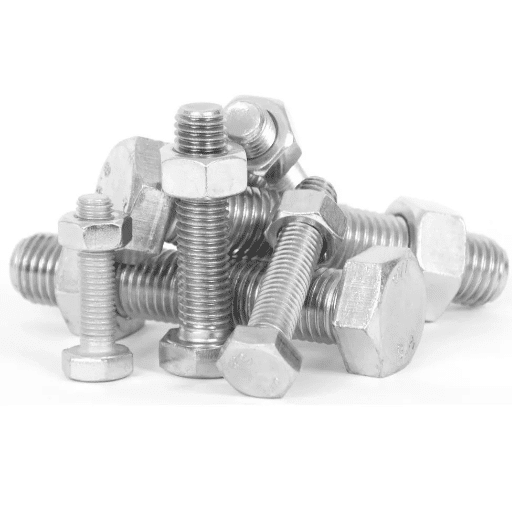
Marine Environments
Both materials excel in seawater applications with great resistance to chloride-induced stress corrosion cracking. Zeron 100 has proven service life of over 20 years in Sea Water Intake Pumps.
Oil and Gas Industry
Ultimate materials for harsh environments with high pressure, temperature, and aggressive chemicals. Used in offshore platforms, risers, and pipelines. Zeron 100 proven reliable with H₂S levels up to 0.1 bar.
Desalination Plants
Zeron 100 is the most suitable material for evaporators and heat exchangers. Exceptional pitting resistance guarantees continued operation in multi-stage flash (MSF) desalination plants.
Chemical Processing
Both materials used in storage tanks, agitators, and reactors. 2507 outperforms in concentrated sulfuric and hydrochloric acids due to better PREN.
Pulp and Paper Industry
Zeron 100 widely used in bleaching processes. Resistance to crevice corrosion vital for machines in high humidity and chemical concentration environments.
Power Generation
Duplex 2507 used in cooling water and flue-gas treatment processes, providing required lifespan and resistance to corrosive by-products.
Industries Utilizing Duplex 2507
- Offshore Oil and Gas: Subsea systems, flowlines, structures exposed to saline water and chloride stress
- Chemical Processing: Heat exchangers, pressure vessels, critical piping with strong chemicals
- Desalination Plants: Evaporator units, brine heaters, reverse osmosis systems
- Power Generation: Cooling water systems, flue-gas treatment processes
- Renewable Energy: Emerging applications in tidal and offshore wind energy projects
Common Uses of Zeron® 100
- Offshore Platforms: Risers, manifolds, pipelines subject to harsh chloride and sulfide conditions
- Subsea Equipment: Umbilicals, flowlines (high-pressure situations, pitting resistance)
- Desalination: High-pressure piping, seawater reverse osmosis systems, evaporators
- Chemical Processing: Handling highly corrosive media (acids, alkalis, chlorides)
- Renewable Energy: Tidal and offshore wind energy projects in extreme marine conditions
Choosing the Right Alloy for Your Needs
It really matters to weigh different factors when selecting between Zeron 100 and 2507:
Selection Criteria:
- Environmental Conditions: Chloride concentration, temperature ranges, chemical exposure
- Mechanical Requirements: Load-bearing capacity, pressure resistance, impact strength
- Financial Aspects: Initial investment vs. lifecycle costs, maintenance intervals
- Operating Environment: Marine, chemical processing, oil and gas specific conditions
- Long-Term Performance: Expected service life, corrosion rate projections
- Total Cost of Ownership: Material cost, fabrication, installation, maintenance
Key Considerations:
Zeron® 100 is the preferred choice for applications requiring the highest durability and corrosion resistance, especially in marine and offshore sectors. Its outstanding mix of high tensile strength, resistance to pitting and crevice corrosion, and thermal conductivity make it ideal for the most demanding environments.
2507 offers similar performance with slightly higher maximum tensile strength and excellent thermal conductivity, making it suitable for heat transfer applications and elevated temperature operations.
For industries with less stringent conditions, alloys like 316L or Duplex 2205 can be performers with greater cost-effectiveness.
Welding Considerations
Both Zeron 100 and Duplex 2507 can be welded using various methods:
- Gas Tungsten Arc Welding (GTAW)
- Shielded Metal Arc Welding (SMAW)
Important: Specific filler materials compatible with the unique material properties must be used to achieve welds that possess the corrosion and strength attributes of the base material. Proper techniques are essential to prevent thermal sensitization or phase imbalance.
References
-
University of North Texas Digital Library: Provides a metallurgical evaluation of cast duplex stainless steels, including Zeron 100 and Alloy 2507, and their ASTM standards. Read the document.
-
University of Tennessee Trace Repository: Discusses the metallurgical properties of SAF Alloy 2507 and Zeron 100, including their applications and ASTM classifications. Access the thesis.
-
Florida Atlantic University – SNMREC: Explores material selection methodologies for renewable energy, comparing the performance of Zeron 100 and SAF 2507. View the research.
Frequently Asked Questions (FAQ)
How does the corrosion resistance of Zeron 100 and Duplex 2507 vary?
Zeron 100 demonstrates excellent resistance to corrosion even in the harshest conditions, specifically when assessed against Duplex 2507. Corrosion resistance is one of the main features of both materials that make them fit for extreme conditions, however, Zeron 100 frequently wins over the rest because of its chemical composition that is not only unique but also contains more alloyed materials thus making it the first choice for those applications where direct contact with corrosive environments is needed for an extended period.
What are the differences in mechanical properties of Zeron 100 and Duplex 2507?
In general, Zeron 100 tends to be stronger than Duplex 2507, which is a very important aspect for the latter’s performance in challenging conditions. The coercive force that Zeron 100 holds comes not only from its mechanical properties but also the alloying that takes place specifically with those elements which allow it to stretch further to a point where stress is applied compared to the case of Duplex 2507.
What are the different methods of welding that are applicable to Zeron 100 and Duplex 2507?
Gas tungsten arc welding (GTAW) and shielded metal arc welding (SMAW) are among the different methods that can be used to weld Zeron 100 and Duplex 2507. However, the specific filler materials that are compatible with the unique material properties have to be used in order to achieve welds that are not only strong and durable but also possess the corrosion and strength attributes of the base material.
What are the applications that Duplex 2507 can be used for?
Duplex 2507 is an excellent candidate for applications that need very good, if not the best, corrosion resistance. In addition, the acid tolerance properties of Duplex 2507 make it suitable for chemical processing, oil and gas, and marine industry applications, overall, where durability and reliability are the crucial factors.
How does the chemical composition of Duplex 2507 play a role in strength and corrosion resistance?
The chemical composition of Duplex 2507 is such that it contains about equal amounts of both ferrite and austenite; this scenario is supportive to the strength and corrosion resistance of the material. Thanks to this special combination, pitting corrosion cannot harm it that easily, thus, it will go on being more favorable stainless steel decision in the presence of very corrosive conditions in comparison to other grades of stainless steel.
What makes Zeron 100 belong to the duplex stainless steel family?
Zeron 100 is regarded as part of the duplex stainless steel family due to having both austenitic and ferritic stainless steels in its microstructure. This mutation ups the ante regarding its strength and corrosion resistance, thereby, making it unique among other stainless steels, including the more common duplex grades such as standard 2205.
What are the reasons for Zeron 100 to be better than Duplex 2507?
Zeron 100 makes the list of the desirable materials over Duplex 2507 because of its much higher resistance to pitting corrosion and excellent performance in non-oxidizing and mineral acids. Furthermore, the exceptional composition of the alloy allows it to survive in the toughest climates, thus, it is a more trustworthy option for performance-critical applications.
Tensile strength in Duplex 2507 is an important factor that sets it apart from other duplex alloys.
The tensile strength is one of the most important factors that denote the better in the case of Duplex 2507 compared to other alloys of the same family. Its very high tensile strength makes0085 39 it to be used in situations where there is a lot of stress, and thus it is being drawn up to be one of the very standards of other duplex steels which may not be able to perform that well under extreme stress.

